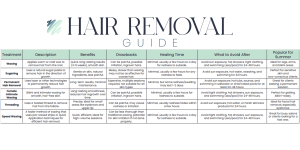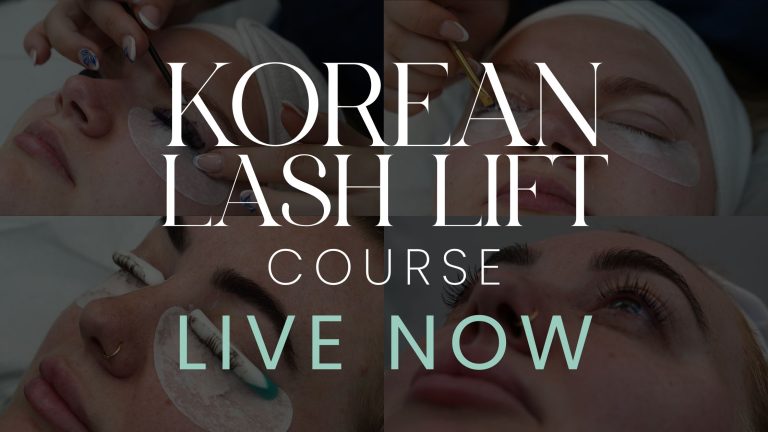Christmas Exclusive Offers - Buy 2 Get 2 Free *on courses only* add all 4 courses to your basket and the discount will be automatically applied. Valid for a limited time. | Christmas Exclusive Offers - Buy 2 Get 2 Free *on courses only* add all 4 courses to your basket and the discount will be automatically applied. Valid for a limited timeBuy 2 Get 2 Free *on courses only* add all 4 courses to your basket and the discount will be automatically applied. Valid for a limited time
This Summer’s Ultimate Guide to Hair Removal

1. Sugaring: Natural and Gentle Hair Removal
What is Sugaring? Sugaring is a hair removal technique that uses a paste made from natural ingredients like sugar, water, and lemon juice. The paste is applied to the skin against the direction of hair growth, then removed in the direction of growth, which can help reduce irritation compared to waxing. Positives:-
- Gentler on the Skin: The sugar paste only adheres to the hair, not the skin, which means less irritation and fewer chances of burns.
-
- Natural Ingredients: It’s a great option for clients looking for a chemical-free, eco-friendly hair removal method.
-
- Exfoliating Benefits: Sugaring also exfoliates the skin, removing dead skin cells and leaving it feeling smooth and refreshed.
-
- Less Pain: Many people find sugaring less painful than waxing since it doesn’t pull at the skin.
-
- Messy: The sugar paste can be a bit sticky and harder to work with compared to wax.
-
- Time-Consuming: Sugaring is a slower process than waxing, so it might take longer to complete larger areas like legs.
-
- Recovery time is generally quick, with minimal redness or irritation.
-
- Aftercare involves keeping the skin hydrated and avoiding direct sun exposure for at least 24 hours to prevent irritation.
-
- Wait 24-48 hours before exposing your skin to the sun or sea, as sugaring makes the skin more sensitive.
2. Waxing: Classic Hair Removal
What is Waxing? Waxing involves applying a thin layer of hot or cold wax to the skin, followed by pressing a cloth strip on top. The strip is quickly pulled off, removing hair from the root. Positives:-
- Quick and Effective: Waxing is one of the fastest hair removal methods, and it’s effective for larger areas like legs and back.
-
- Long-Lasting Results: Waxing removes hair from the root, and results can last 3-6 weeks, depending on the individual’s hair growth cycle.
-
- Smooth Finish: It leaves the skin smooth and free of hair for weeks at a time.
-
- Painful: Waxing can be painful, especially for clients with sensitive skin or those getting large areas treated.
-
- Possible Skin Irritation: Some clients may experience redness, bumps, or irritation after waxing.
-
- Recovery time is usually quick, but redness and bumps may last for a few hours to a day.
-
- Aftercare includes avoiding hot showers, tight clothing, and exfoliating the skin to prevent ingrown hairs.
-
- You should avoid sun exposure for 24-48 hours after waxing to prevent irritation or pigmentation changes.
-
- It’s also recommended to avoid the sea or chlorinated water for 24 hours to reduce the risk of infection.
3. Speed Waxing: The Fast and Efficient Option
What is Speed Waxing? Speed waxing is an advanced technique where a technician uses specialized wax that adheres to the hair more efficiently, allowing them to complete the treatment faster. This technique is ideal for clients looking for a quicker service without sacrificing results. Positives:-
- Fast and Efficient: Speed waxing is perfect for clients with busy schedules who want quick, effective hair removal.
-
- Long-Lasting: Like regular waxing, speed waxing provides smooth, hair-free skin for 3-6 weeks.
-
- Less Mess: The process is more streamlined, with fewer products and materials involved, making it less messy than traditional waxing.
-
- More Aggressive: Since the technician works faster, there is a higher chance of mistakes or discomfort, especially if the skin isn’t properly prepped.
-
- Not Ideal for Sensitive Skin: Speed waxing can be harsher on sensitive skin compared to sugaring.
-
- Recovery time is similar to regular waxing, with minor redness or irritation that typically fades within a few hours.
-
- Aftercare is important to ensure smooth skin—hydrate and avoid exfoliating too soon.
-
- As with regular waxing, it’s best to wait 24-48 hours before sun exposure or swimming in the sea.
4. Permanent Hair Removal: The Long-Term Solution
What is Permanent Hair Removal? Permanent hair removal methods, such as laser hair removal, use advanced technology to target hair follicles, effectively destroying them so they can no longer grow hair. This method offers a long-term solution to unwanted hair. Positives:-
- Long-Term Results: After several treatments, permanent hair removal can provide lasting results, often with little to no hair regrowth.
-
- No More Maintenance: Clients don’t have to worry about hair removal for months or years after completing their treatment plan.
-
- Less Painful Over Time: Laser treatments become less painful with each session, and many devices now feature cooling technology to reduce discomfort.
-
- Multiple Sessions Required: Permanent hair removal takes several sessions to achieve full results, making it a more significant time investment.
-
- Expensive: Laser hair removal tends to be pricier than waxing or sugaring.
-
- Not Suitable for All Skin Types: Some devices may not work as effectively on darker skin tones or lighter hair.
-
- There is minimal recovery time after laser treatments, with clients often returning to daily activities right away. However, mild redness or swelling may occur.
-
- Aftercare includes avoiding sun exposure, exfoliating the skin, and using soothing creams to keep the treated area hydrated.
-
- You should avoid direct sun exposure for 48 hours after a laser treatment and use SPF protection for the following weeks. It’s also advised to avoid saltwater or chlorine for at least 24 hours after your session.
After any hair removal treatment—whether it’s waxing, sugaring, threading, speed waxing, or permanent hair removal—it’s crucial to be mindful of sun exposure and going in the sea. Here’s why:
Sun Exposure
After hair removal, your skin becomes more sensitive. This makes it more prone to irritation, redness, and sunburn. Exposing freshly treated skin to the sun increases the risk of burns, pigmentation changes, and even long-term damage, like scarring. The heat from the sun can aggravate any inflammation and hinder the skin’s ability to recover properly. For this reason, it’s recommended to avoid direct sunlight for at least 24-48 hours after treatment. If sun exposure is unavoidable, applying a high-SPF sunscreen (preferably SPF 30 or higher) is essential to protect the skin.Going in the Sea
Swimming in the sea or in chlorinated pools should also be avoided after hair removal. Saltwater and chlorine can cause irritation and dryness on freshly treated skin. The chemicals in seawater and pool water can potentially lead to breakouts or even infections in areas that are more sensitive post-treatment. Additionally, saltwater can further dry out the skin, slowing down the healing process and making the skin more vulnerable to sensitivity. Therefore, it’s advisable to wait at least 24-48 hours before submerging treated skin in seawater or pool water to ensure the skin has time to recover and avoid unnecessary irritation. In summary, while getting hair removal treatments can leave your skin smooth and refreshed, taking extra care with sun exposure and avoiding the sea right after treatment will help protect your skin and ensure the best results.Which Treatment is Best for Summer?
-
- Sugaring is great for clients seeking a natural, gentle treatment with minimal irritation, perfect for prepping the skin for summer.
-
- Waxing and Speed Waxing offer quick, effective results but may require more careful aftercare, especially when it comes to sun exposure.
-
- Permanent Hair Removal is ideal for clients who want a long-term solution and are willing to commit to multiple sessions, with the bonus of no ongoing hair maintenance.



